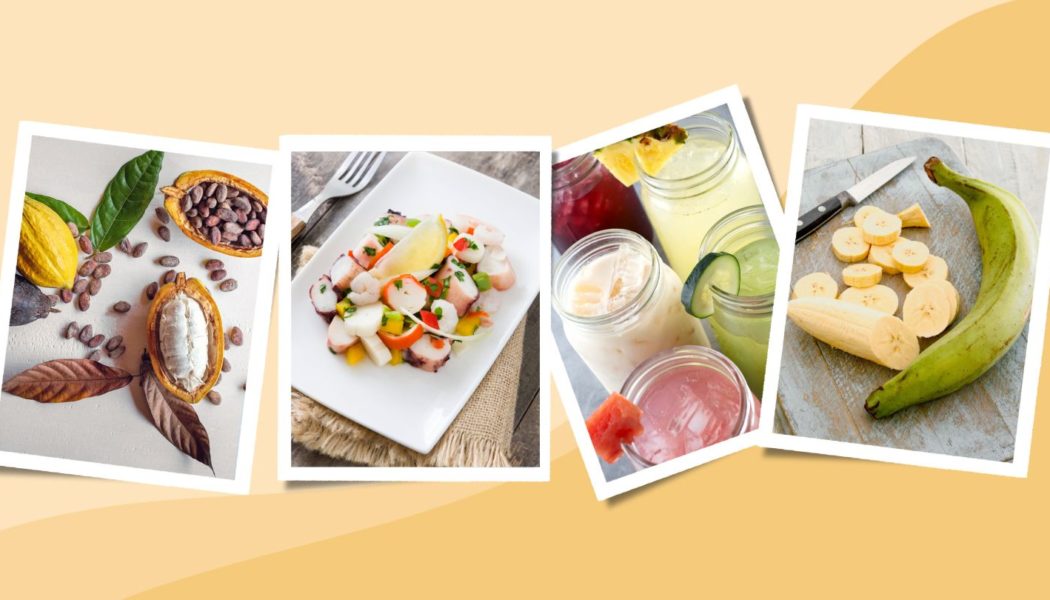
In many cultures, food is more than just sustenance, but also a way to bring families and friends together. This is certainly true of Hispanic cultures, says Lorena Drago, RDN, CDCES, author of Beyond Rice and Beans. “Food unites us. Family is integral to the Hispanic family, regardless of what country or region we come from.”
Hispanic describes any person whose origins are Mexican, Puerto Rican, Cuban, Central or South American, or of some other Hispanic origin, according to Pew Research Center. Some people prefer to use the term Latino or Latinx, which describes persons of Latin American origin.
In the United States, the Hispanic population is the largest racial or ethnic minority, with more than 63 million individuals, according to the latest data from the United States Census Bureau. That’s nearly one-fifth of the total population. Consequently, elements of Hispanic cultures, including food, has found a substantial place in American life. “Food is used to celebrate, mourn, uplift, gather, relieve, and elevate both pivotal and mundane moments in our lives,” says Tanya Bernard, RDN, who works for Culina Health, a virtual nutrition company.
Unfortunately, American life can also impact traditional Hispanic diets. Research has found that when people emigrate to the United States, their diets become more Americanized as they incorporate more convenience foods into their diet, such as burgers, fries, and sodas, according to a study published in The Journal of Nutrition in September 2021. The study showed that the longer Hispanics and Latinos lived in the United States, the more their dietary patterns changed as they adopted a Western diet. Another study published in The International Journal of Environmental Research and Public Health in February 2021 showed that Latino men ate more unhealthy foods and more meals outside the home due to working long hours.
“Unfortunately, as Hispanic Americans acculturate, their diets more closely resemble the typical American eating pattern,” says Sylvia Klinger, RDN, founder of Hispanic Food Communications. Cultural attitudes about cooking and food may also play a role. In the fast-paced culture of the United States, preparing meals may seem more like an obligation than fun, Klinger says. But for many Hispanic people, “Cooking isn’t perceived as a chore,” she says. “The table is a great place to get together and enjoy delicious and nutritious meals while building relationships.”
This evidence indicates that Americans could learn a thing or two about healthy eating habits from traditional Hispanic diets — and enjoy some of those traditional foods whether you’re Hispanic or not. “Generally speaking, our foods are healthy and include legumes, fruits, vegetables, whole grains, lean proteins, herbs, and spices,” says Bernard. “Hispanics take great pride in our traditional foods, and their nutritional significance is conveyed across generations.”
Here are 11 traditional Hispanic Foods to consider working into your diet regularly.
1. Agua Frescas
Thirsty but don’t want a soda or alcoholic beverage and want something more than plain water? Consider agua frescas (which translate to “fresh water”), a drink made with fresh fruit, as noted by the University of Illinois. “Hispanics love making beverages with fresh fruits,” says Klinger. “For example, agua frescas made with fresh juice and water are very popular in Mexico, while in the Caribbean it’s common to drink juices such as jugo de tamarindo (tamarind juice) and jugo de piña (pineapple juice).” Most Mexican restaurants have agua frescas on the menu but you can also prepare one yourself. “If you’re making one at home, I always recommend using ripened fruit and skipping the added sugar, which is hardly ever needed,” says Klinger. A typical can of cola has more than 36 grams (g) of sugar, according to data from the U.S. Department of Agriculture (USDA), and many juices are equally sugar-laden, so you’ll save on empty calories and get some trace nutrients and fiber from the fruit.
2. Avocados
These fruits are a staple ingredient in many Hispanic cuisines and for good reason: They’re a nutritional powerhouse. Eating two servings of avocado — the equivalent of one avocado — a week reduced the risk of heart disease, according to a study published in the Journal of the American Heart Association in March 2022. And if you need even more reasons to enjoy these tasty and versatile fruits, they’re packed with vitamins and minerals, notes the USDA. “Avocados have antioxidants to protect your healthy cells and vitamins and minerals including vitamins K, C, E, B, potassium, and lutein for protecting your eye health,” says Klinger.
3. Beans
Beans are a food staple in many Hispanic cuisines. “Beans are an inexpensive plant protein source,” says Klinger. According to Rutgers, beans are less expensive and leaner than animal protein. Plus, they’re an excellent source of numerous minerals and vitamins. Beans contain folate, iron, potassium, and magnesium, according to a study published in Nutrients in February 2021. If you prefer using canned beans instead of purchasing dried beans, Klinger says (and Rutgers confirms), “Just rinse them to eliminate about 40 percent of the sodium.”
4. Cacao
Cacao, a large seed pod filled with pulp and seeds (known as “beans”), is the base for making chocolate, notes Colorado State University, but it can be used for much more than that. Both the fruit and beans are edible, though the former is harder to come by in the United States. Cacao beans are one of the richest food sources of antioxidants, and the main reason dark chocolate has so many health benefits. Cacao is high in flavanols that may help heart health and help regulate blood glucose and increase insulin sensitivity, notes the Harvard University School of Public Health. You can find cacao as nibs, tiny pieces of the actual dried cacao bean, and powder (not to be confused with cocoa powder). “Cacao isn’t technically a spice, it’s a ground-up seed, but I like to think of it as an honorary spice,” says Bernard. “Many cultures use cacao ceremonially, as they believe that cacao is a divine food that connects the earthly and heavenly realms.” You can find cacao powder at health food stores and some supermarkets. It is less processed and less sweet than chocolate, so can be added to smoothies and other drinks, spice blends, oatmeal and stews, according to Bon Appetit.
5. Ceviche
Ceviche, a common dish at Mexican and Peruvian restaurants, is made with raw fish or seafood that uses an acid — typically lime juice — that breaks down the proteins and essentially cooks the fish or seafood, noted a study published in Foods in March 2022. “Most Hispanic countries have coastal regions, so fish and seafood are an abundant part of our cuisines,” says Bernard. “Ceviche is one of those foods that is not only delicious but also packed with nutrients.” Seafood is full of omega-3 fatty acids, which is beneficial for heart health and overall health, according to the National Institute of Health.
6. Chia Seeds
Long before they were a popular superfood, these tiny black seeds were one of the most important crops of the Aztecs, notes Britannica. The plant that gives us chia seeds, Salvia hispanica, is native to Mexico and Guatamala, and are grown primarily in Latin American countries. Chia seeds are renowned for their nutrient density: One ounce contains nearly 10 g of dietary fiber, more than 4 g of plant-based protein, and healthy omega-3 fatty acids, as well as calcium, magnesium, potassium, iron, and zinc, per USDA data. “Chia seeds can be added to cereals, yogurt, and lemonade,” says Drago. They’re also well known for their ability to create a thick gel when mixed with water, which has led the seeds to be used in jams and made into healthy “chia pudding,” among other dishes.
7. Guava
Guava is a sweet, small, pink-fleshed fruit with plenty of minerals and vitamins, as well as beta carotene and lycopene, notes the USDA. “A common fruit in Puerto Rico, the Dominican Republic, Cuba, and the rest of Latin America, fresh guava, guava juice, and guava paste are very popular,” says Drago. One small past study found that consuming guava pulp without the peel was effective in lowering blood glucose, triglycerides, and LDL-C, while increasing the good cholesterol, HDL-C.
8. Guanabana
Guanabana, also known as soursop and graviola, is a fruit with a prickly exterior that has a creamy white pulp and lots of black seeds that is both sweet and tart, according to the Cleveland Clinic. “Guanabana is a hydrating fruit that has a sweet and tangy flavor — think pineapple meets lychee meets strawberry,” says Bernard. It contains antioxidants, fiber, and vitamin C, according to USDA data. Soursop has been widely used in traditional medicine for its purported anticancer, antiulcer, and antidiabetic properties, among other uses, reports a study published in the journal Molecules in February 2022. You can find this tropical fruit fresh and frozen at specialty markets.
9. Mango
Mangoes are easy to find at grocery stores in the produce section, frozen aisle, and as dried fruit. Deliciously sweet and juicy tropical fruit with vibrant orange flesh, they can be eaten like an apple, added to fresh salsa, salads, smoothies or even grilled, notes Cleveland Clinic. “Although mango is not originally from Latin America, mango grows in Mexico and Peru and it is consumed in Latin America,” says Drago. Per the USDA, mangoes are a good source of several vitamins, including C, and research published in Nutrients in December 2021 found that adults who regularly consume mangoes had significantly higher daily intakes of dietary fiber, magnesium, potassium, folate, and vitamins A, C, and E, and significantly lower intakes of added sugar and cholesterol, compared with those who do not regularly eat mangos.
10. Prickly Pear
The flat, wide, and round pad of the prickly pear cactus, also known as nopales, is a common ingredient in Mexican cuisine, according to Britannica. Nopales are typically boiled or grilled and used as a filling for tacos as well as eaten raw in salads. “The mighty nopal is high in antioxidants with anti-inflammatory properties ,” says Klinger, and research backs this up. Research published in Antioxidants (Basel) in December 2021 indicates that the antioxidants in nopal may inhibit some free radicals, compounds that contribute to chronic disease and aging. Nopales contain more than 5 grams of fiber per cup, according to data from the USDA, which may help improve insulin sensitivity and glycemic control for people with type 2 diabetes, per a study published in The Journal of Functional Foods in July 2021. Nopales also contain many vitamins and minerals, such as vitamin C, magnesium, potassium, and iron.
11. Plantains
Plantains look similar to bananas but are eaten cooked, not raw, and often when they are green, according to Britannica. “Plantain or plátano in Spanish is a food that is beloved by the Hispanic community and often gets a bad rap,” says Barnard. “Plantain is an extremely versatile food, and green plantain is an abundant source of resistant starch.” Resistant starch is a fiber that isn’t digested in the intestines and ferments in the colon, creating beneficial bacteria in the gut, reports a review published in June 2022 in The Journal of Functional Foods. There is evidence this type of starch may have benefits for blood sugar, gut and heart health, and weight loss or maintenance.
Summary
Many traditional Hispanic foods have proven health benefits. Whether you already eat some of these foods or are intrigued to add some to your diet, incorporating these Hispanic fruits, seeds, drinks, or dishes into your meal planning can be a fun way to vary your diet, add some flavor, and make it a bit healthier, too.









